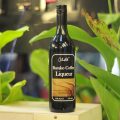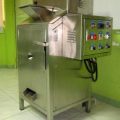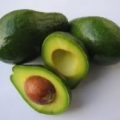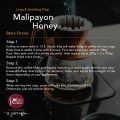Are you one of the millions of Filipino coffee-drinkers who need a regular cup of fresh, sweet-smelling coffee to wake up to in the morning or to stay awake during the day? Well, it might interest you to know that instant coffee has to go through a long process before it actually becomes a sachet and ends in your favorite mug.

Harvesting
Coffee berries are harvested 6-8 months after blooming. It is important to pick only ripe berries since unripe berries will make the coffee more bitter and overripe berries can give your coffee an unpleasant, acrid taste. Ripe berries are red, shiny, and firm. The best way to harvest is to handpick each ripe berry one by one throughout the year as many times as necessary. While handpicking requires a lot of labor, it is recommended since it minimizes handling damage.
Drying
Coffee berries are sun-dried from 8 to 15 days to obtain good quality beans that have 12% moisture.
Storage
To retain its flavor for 3 years or more, green coffee should be stored in a dry place with no unpleasant odors. The moisture content must be kept below 10% to ensure that excellent flavor is preserved.
Green Coffee Processing
Coffee beans should be removed from the fruit before they are dried and roasted. Processing is done using the wet method or the dry method. In the wet method, the pulp of the ripe fruit is removed using a pulping machine leaving a slippery thin layer or mucilage that is removed by washing with water. The cleaned product is called washed coffee. Then, the coffee beans are dried to about 12% moisture content after which they are dehulled using a hulling machine. Coffee beans processed using the wet method are usually of better quality and thus, command better prices. In the dry method, the fruit is allowed to remain on the tree past the fully ripe stage and is partially dried before harvesting. After harvesting, they are dried to 12% moisture content then dehulled using a hulling machine. This method is simpler and cheaper but the product is usually of poorer quality than washed coffee.
Blending
Blending is the process of mixing different coffee varieties to improve the coffee’s acidity, aroma, body and flavor. This method is also used to produce cheaper coffee. Blending Before Roasting (BBR) is traditionally done by retail and institutional roasters. Using this method, coffee beans with similar characteristics are combined and roasted to the same degree. It is used for the consistency of the product, and produces a blend that has a unique flavor. Blending After Roasting (BAR) is usually done by specialty coffee roasters. Each coffee variety is roasted separately with different time and temperature setting to optimize its own flavor.
Roasting
Roasting green coffee enhances aroma and flavor. The color of lightly roasted beans ranges from cinnamon to light chocolate. Lighter roasts are generally not used for espressos since they produce a sharper, more acidic taste than darker roasts. On the other hand, darker roasts have a bittersweet tang and its color could range from medium chocolate brown with a satin-like luster to black with an oily appearance. Extreme dark roasts have a smoky flavor and are excellent for brewed coffee.
Grinding
The right grind can produce a brew that dazzles your taste buds but an incorrect grind might leave you unimpressed. Adjusting the grind changes the number of fine particles that interact with water during brewing, which in turn changes the flavor and aroma. A brew using finely ground coffee tastes differently from a brew that uses coarsely ground coffee. Finely ground coffee looks muddier, tastes more acrid and makes a stronger tasting cup than a coarser grind.
Characteristics of Green Coffee Varieties
We have three varieties of green coffee for commercial purposes: Arabica, Robusta, and Liberica. Arabica is delicate and harder to grow thus it is more expensive than the other varieties. It has a delicate taste and is used to add a tinge of acidity to the finished brew. Robusta has a woody, astringent flavor, has high caffeine content and is the cheapest among the three. Liberica coffee beans are kapeng barako. It is the largest bean and known for its strong taste and flavor.
—————-
Source:
Coffee Processing Technology by Fe N. Dimero, Chair Food Processing Department, Cavite State University
by Junelyn S. de la Rosa, BAR Chronicle, November 2003 Issue (Vol. 4 No. 13)






